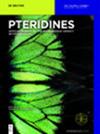Mercury exposure, neopterin profile, and tryptophan degradation in dental technicians
IF 0.9
4区 医学
Q4 BIOCHEMISTRY & MOLECULAR BIOLOGY
引用次数: 0
Abstract
Abstract Amalgam has been widely used as a restorative dental material for over 150 years. Most standard dental amalgam formulations contain approximately 50% elemental mercury in a mixture of copper, tin, silver, and zinc. Mercury is a highly volatile metal, which can easily vaporize to a colorless and odorless gas. It has been demonstrated that mercury is released from dental amalgam, which is increased by chewing, eating, brushing, and drinking hot liquids. Besides this, amalgam is the main occupational exposure source of mercury for dental workers. It is known that mercury exposure causes immune modulation in humans. In this study, it was aimed to evaluate the changes in neopterin levels and tryptophan (Trp) degradation in dental technicians. It was observed that low levels of occupational mercury exposure resulted in decreased neopterin, kynurenine (Kyn), and Kyn/Trp levels. Moreover, mercury and neopterin levels had a significant positive correlation in workers. The lower neopterin levels and Kyn/Trp in dental technicians compared to an unexposed group indicates a possible immune suppression with low level of occupational mercury exposure during amalgam preparation. The relationship between urinary mercury levels as an indicator of occupational mercury exposure and neopterin reminded an effect on T-cell-mediated immune response.牙科技师的汞暴露、新蝶呤谱和色氨酸降解
摘要汞合金作为一种牙科修复材料已经被广泛使用了150多年 年。大多数标准的牙科汞合金配方在铜、锡、银和锌的混合物中含有大约50%的单质汞。汞是一种高度挥发性的金属,很容易蒸发成无色无味的气体。已经证明,汞是从牙科汞合金中释放出来的,通过咀嚼、进食、刷牙和饮用热液体会增加汞的含量。除此之外,汞合金是牙科工作者汞的主要职业暴露源。众所周知,汞暴露会导致人体免疫调节。在本研究中,旨在评估牙科技术人员新蝶呤水平和色氨酸(Trp)降解的变化。据观察,低水平的职业汞暴露会导致新蝶呤、犬尿氨酸(Kyn)和Kyn/Trp水平下降。此外,工人体内汞和新蝶呤水平呈显著正相关。与未暴露组相比,牙科技师的新蝶呤水平和Kyn/Trp较低,这表明在汞合金制备过程中,职业汞暴露水平较低,可能存在免疫抑制。作为职业汞暴露指标的尿汞水平与新蝶呤之间的关系提醒人们注意对T细胞介导的免疫反应的影响。
本文章由计算机程序翻译,如有差异,请以英文原文为准。
求助全文
约1分钟内获得全文
求助全文
来源期刊

Pteridines
生物-生化与分子生物学
CiteScore
1.20
自引率
25.00%
发文量
6
审稿时长
>12 weeks
期刊介绍:
Pteridines is an open acess international quarterly journal dealing with all aspects of pteridine research. Pteridines are heterocyclic fused ring compounds involved in a wide range of biological functions from the color on butterfly wings to cofactors in enzyme catalysis to essential vitamins. Of the pteridines, 5,6,7,8-tetrahydrobiopterin is the necessary cofactor of several aromatic amino acid monoxygenases, the nitric oxide synthases and glyceryl ether monoxygenase (GEMO). Neopterin plays an essential role in the immune system and is an important biomarker in laboratory medicine for diseases such as HIV, cardiovascular disease, malignant tumors, among others.
Topics:
-Neopterin, dihydroneopterin, monapterin-
Biopterin, tetrahydrobiopterin-
Folates, antifolates, riboflavin-
Phenylalanine, tyrosine, phenylketonuria, serotonin, adrenalin, noradrenalin, L-DOPA, dopamine, related biogenic amines-
Phenylalanine hydroxylase, tyrosine hydroxylase, tryptophan hydroxylase, nitric oxide synthases (iNOS), alkylglycerol monooxygenase (AGMO), dihydropterin reductase, sepiapterin reductase-
Homocysteine, mediators of inflammation, redox systems, iron.
 求助内容:
求助内容: 应助结果提醒方式:
应助结果提醒方式:


